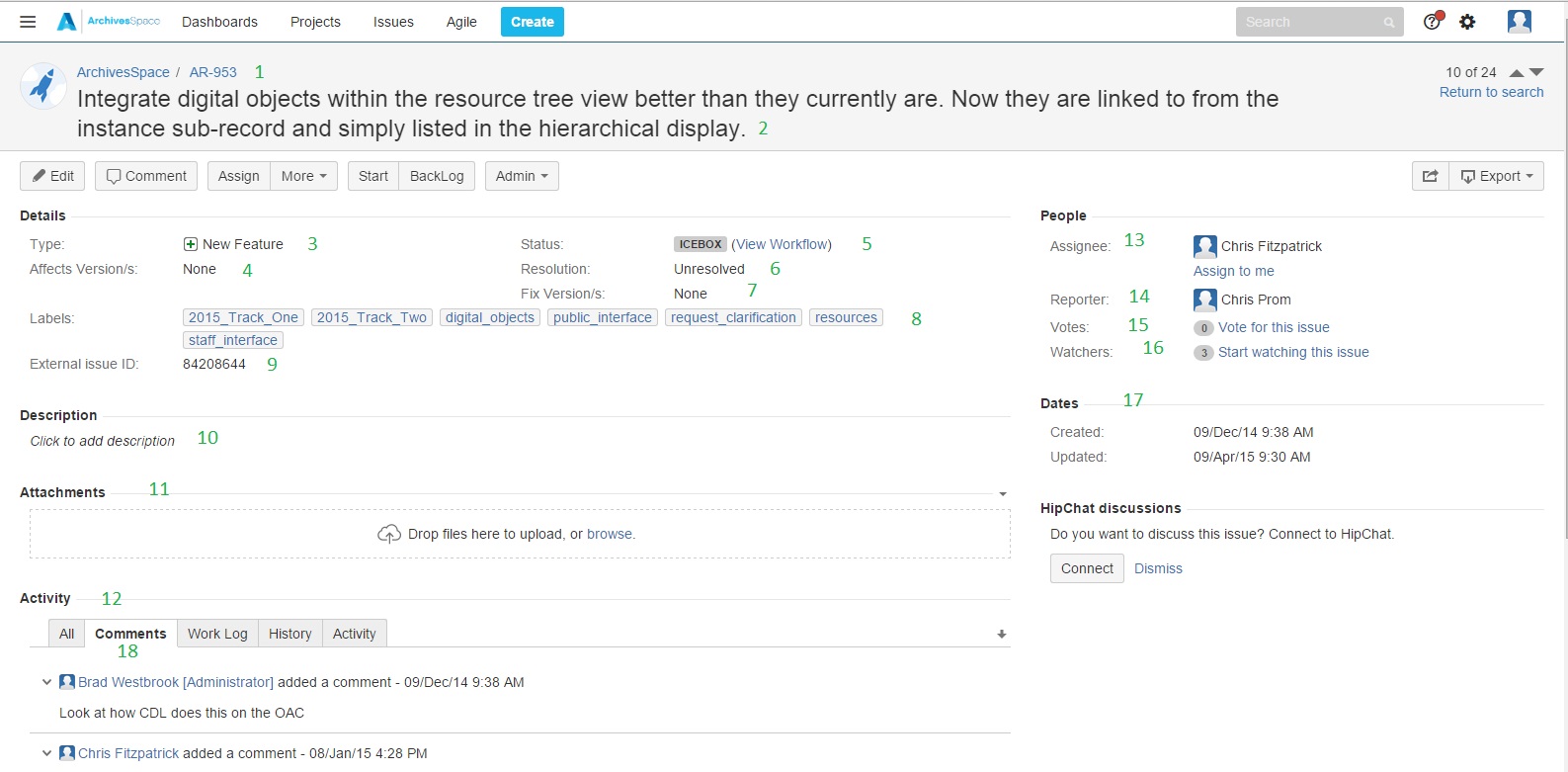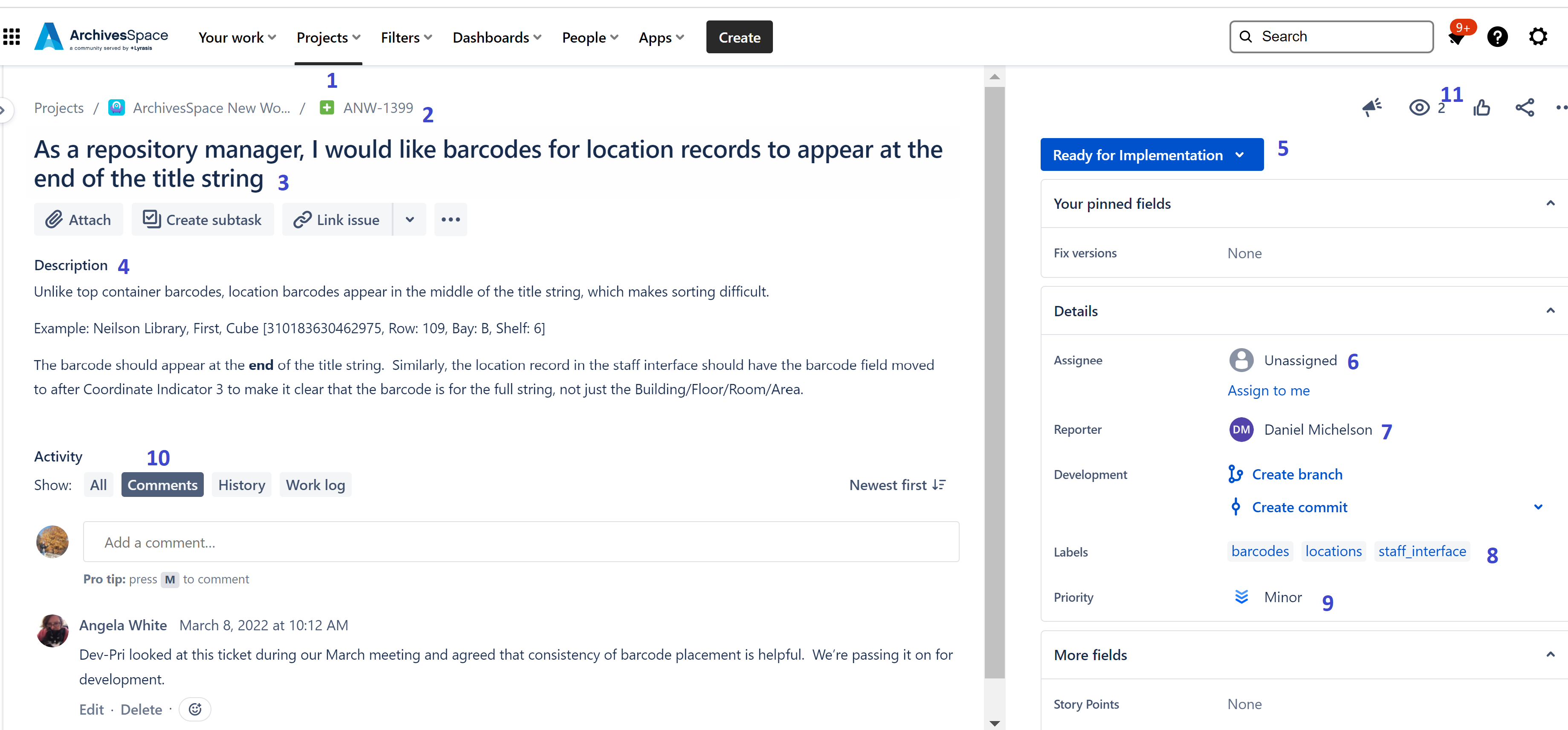Key to a JIRA issue record
...
- Summary - a one-sentence description of the issue
- Type - See the Glossary for Glossaries for descriptions of the types in use by ArchivesSpace.
- Affects Version/s - not currently used by ArchivesSpace, but may be in the future
- Status -
- Resolution - indicates whether or not the issue has been addressed - typical values are Unresolved or Resolved
- Fix Version/s - not currently used by ArchivesSpace, but may be in the future
- Labels - keywords that relate to this issue; one or more labels may be applied. See the Glossary for descriptions of many of the labels currently in use.
- External Issue ID - the unique identifier from Pivotal Tracker, the system used prior to JIRA and from which many of the issues were imported.Issue Key - a unique identifier for the issue
- Summary - a short, usually one-sentence, description of the issue
- Description - a fuller description of the issue (not always used if the summary describes the issue in enough detail)
- Attachments - some issues have external documents such as specifications or screenshots that further describe the issue
- Activity - a log of any changes to the issue as well as a place to participate in discussion of the issueStatus - indicates where a story is in the development workflow. In the active ANW project, the major status options, in workflow order, are Newly Added > Awaiting More Information > Awaiting Prioritization > Ready for Implementation > Assigned to Developer > Development Started > Ready for Testing > Ready for Inclusion in Release Candidate > Closed - Complete, Closed - Will Not Do, or Closed - Duplicate (You can also view the full Workflow Diagram and Narrative, with all statuses.)
- Assignee - the developer tasked with working on the issue
- Reporter - the person who first logged the issue into JIRA, usually an ArchivesSpace Program Team member or a member of one of the Advisory Councils
- Votes - The number of votes the issue has received. If you are your institution's member representative, when you are logged in, you will also be able to vote on an issue, or see whether you've voted for an issue.
- Watchers - The number of people following the issue and who receive notification when it has been updated. If you are your institution's member representative, when you are logged in, you will also be able to watch an issue, or see whether you're watching an issue.
- Labels - keywords that relate to this issue; one or more labels may be applied. See the Glossaries for descriptions of many of the labels currently in use.
- Priority - a relative level of priority to the community or the health of the application. See the Glossaries for definitions.
- Comments - Additional information about the user story, such as adjustment to descriptions or specifications, references to related user stories or sources, or explanation of why a user story was not accepted.
- Notifications/Watch/+1 options - buttons to further interact with the issue, including the option of being notified when anything is updated on it.
Not pictured
Attachments - some issues have external documents such as specifications or screenshots that further describe the issue
Dates - indicates when the issue was created and last updated in JIRA
...
.

